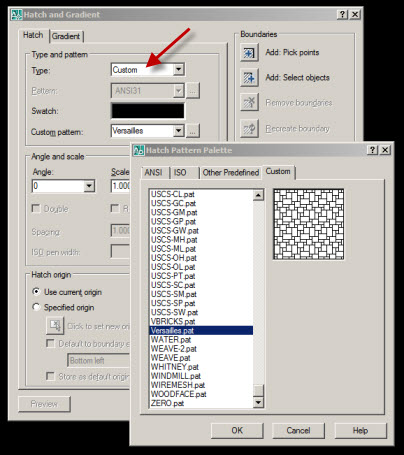Stucco Hatch Pattern For Autocad
вторник 04 декабря admin 72
Sand does not seem to be the right type. I found that AutoCAD has a better match listed as General_Texture.pat it can be found in the relative folder, depending on your user setup: C: Users username AppData Roaming Autodesk ACA 2012 enu Support pats I saved a.pat file on my website click on technical drawings, scroll to the bottom of the page, then right click the file like titled Gypsum-Plaster.pat and then Save Target As.
You can make any hatch a model hatch by editing it in a text editor: Add the line:;%TYPE=MODEL. Just after the name. Good luck.-----BallewDesigns.com. This user is offline. View Website. Tue, Sep 2, 2008 at 11:16:21 PM Model Hatch for Stucco Pattern #3. Joined: Thu, Sep 27, 2007 81 Posts. You can make the hatch in CAD.
WebMoney shit,,,,,,,,,,,,,,,,,,,,,,,,,,,,,,,,,,,,,,,,,,,,,,,,, • on 2018-Oct-14 15:42:23 waihawi said. Drunk Monk Bitard,,,,,,,,,,,,,,,,,,,,,,,,,,,,,,,,,,,,,,,,,, • on 2018-Oct-15 15:24:00 Dufpsrnt said. Kryak programmi key manager 10.
Hatch Pattern Tutorial For AutoCAD 2009, 2008, 2007, 2006, 2005, 2004 LT 2009, 2008, 2007, 2006, 2005, 2004 In brief: Copy and paste the entire contents of my file hatch_pattern_code.txt into your acad.pat hatch file and your acadiso.pat hatch file (aclt.pat and acltiso.pat hatch files for LT). Make sure there is a carriage return at the end of the last line. You will then see the new hatch patterns alongside the standard AutoCAD patterns in the “Other Predefined” tab when using the BHATCH command.
In more detail: You need to locate your existing two standard AutoCAD (or LT) hatch files, open them in a text editor, then copy the hatch pattern code from my file (hatch_pattern_code.txt) into them.  The standard AutoCAD hatch files are acad.pat and acadiso.pat (aclt.pat and acltiso.pat for LT). Acad.pat contains the hatch patterns used in imperial drawings, and acadiso.pat contains the hatch patterns used in metric drawings. The patterns in both files are the same except for the dimensions used.
The standard AutoCAD hatch files are acad.pat and acadiso.pat (aclt.pat and acltiso.pat for LT). Acad.pat contains the hatch patterns used in imperial drawings, and acadiso.pat contains the hatch patterns used in metric drawings. The patterns in both files are the same except for the dimensions used.
Hatch pattern files (.pat) are just ordinary text files consisting mainly of numbers, which is the code AutoCAD uses to draw the hatches. Typically you will find the hatch files in this directory (folder): c: Documents and Settings (your username) Application Data Autodesk (AutoCAD or LT version) enu support The “Application Data” directory is a hidden one, and might not be visible on your system.
To make it visible, go into Windows Explorer (for Windows XP: start > All Programs > Accessories > Windows Explorer) then browse to the c: Documents and Settings (your username) directory. Click on: Tools > Folder Options then click on the “View” tab. Under “Advanced Settings: Hidden files and folders” select “Show hidden files and folders” then hit “OK”.
This will make the “Application Data” directory visible, and allow you to locate the.pat hatch pattern files. (The above example shows the drive letter “c: ”. This might be different on your system, but the directory structure will be the same.) If the hatch files are not in this directory (by default they will be) then you will need to search for them. Search for them in Windows Explorer by hitting the “Search” button, selecting “All files and folders”, then entering *.pat in the file name search box. Select “My Computer” from the “Look in:” list. Then hit “Search”. This will give you the locations of your hatch files.
You might have more than one acad.pat file (or more than one acadiso.pat, aclt.pat, acltiso.pat file). In which case you should use the one that is highest in the “Support File Search Path” list, or use any one and move the directory that it is in to the top of the “Support File Search Path” list (see below). When you are happy that you have located the acad.pat and acadiso.pat files that you are working with (aclt.pat and acltiso.pat files for LT) you need to open them and paste my hatch pattern code into them. Open the files by double-clicking on them, then selecting Notepad to edit them, or any other PLAIN TEXT editor. If you use something like Word, you could end up with formatting that will have an adverse effect on the operation of the patterns.
Alternatively, open Notepad then browse to the files where you previously located them, and open them that way. You will need to open my hatch_pattern_code.txt file in Notepad also.
Select everything in my file and copy it (right-click “Select All”, right-click “Copy”). You will notice that a blank line has been selected at the bottom of my data. This is as it should be. This blank line (a carriage return) is to tell AutoCAD that the end of the file has been reached. Without it you will get an error when you try to hatch. Go into acad.pat (aclt.pat for LT) then go to the last line in the file.

Place the cursor at the start of the next blank line, then paste in my code (right-click “Paste”). Do the same with the acadiso.pat file (acltiso.pat for LT). In both cases, ensure there is a carriage return at the end of the last line. You can paste my code anywhere in your original file. You can pick out my pattern codes and paste them in individually. To make it easier for people who do not do this very often, I suggest pasting everything in at the bottom. Always remembering to have that carriage return at the end of the last line.
